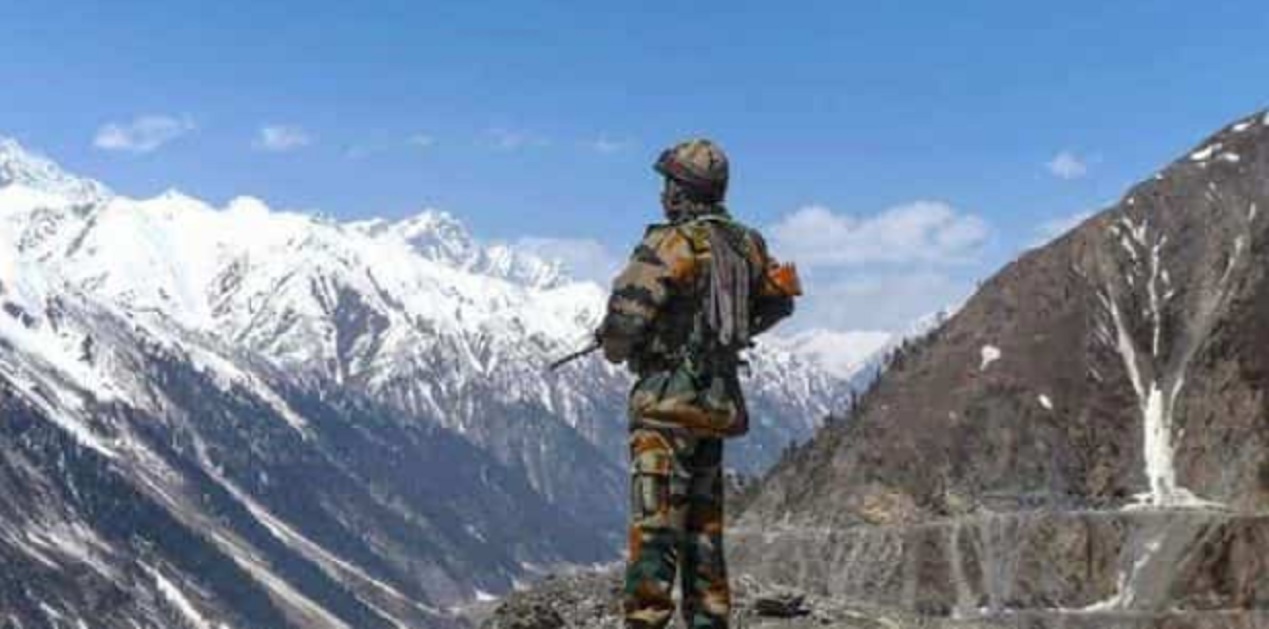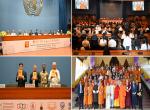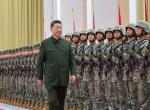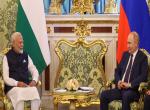The whys and wherefores of the Chinese aggression in Eastern Ladakh, cumulated with the larger peripheral belligerence in South China and East China Seas and the Taiwan Straits in 2020, have been debated ad infinitum. The events of Galwan Valley, Hot Springs-Gogra and Pangong Tso in the months from May 2020 onwards have currently reached the long drawn phase of verifiable disengagement and consequent de-escalation. The omnipresent question is what were the aims and the objectives of Peoples Liberation Army (PLA) in undertaking the aggression. And by accepting to disengage, were these objectives deemed to have been achieved by the PLA? Or in the keen efforts to bring about status quo ante to the situation at the Line of Actual Control (LAC), the underlying strategic motivations of the past events and the future portends are being ignored in Tacticising Strategy1 of PLA/ China. It is instructive to follow the statement of Zhao Lijian, the Chinese foreign ministry spokesman, in Beijing on 03 July 2020, “New Delhi should avoid a strategic miscalculation with regard to China.” The thrust of this paper is to examine the strategic miscalculation that needs avoidance.
Even before the Covid-19 pandemic, a distinctly different behaviour by the Chinese leadership was apparent. In a fervently nationalistic summing up at the National People’s Congress in 2018, President Xi Jinping had stated that “...China will not cede a single inch of its territory to others and is ready to wage a bloody battle to assume it’s due place in the world,” and that every inch of territory lost through unequal treaties has to be reclaimed, and exhorted the PLA to be ready for war. China’s much greater aggression exhibits their leaders’ recognition that shi, the ‘strategic configuration of power’, ‘alignment of forces’ or ‘propensity of things to happen’ has altered resolutely in their favour. What they are obviously following, are strategy and stratagems to potentially exploit the shi and commence shaping and moulding the environment. Apparently, China’s “quiet rise” and “hide your strength, bide your time, never take the lead (韬光养晦,决不当头)”, has already given way to more fierce expressions of great power aspirations and more assertive and even aggressive international posture, also with regard to China’s territorial disputes.
A new scenario has hence emerged in Chinese geopolitical calculations. The PLA’s military transformation is one of the major geo-strategic developments of the 21st Century, covering the complete gamut of ground, aerospace, maritime forces, strategic support and rocket forces. More fundamentally, despite the transformation the ‘Party yet controls the gun’, that is, Chinese Communist Party exercises over-arching control over the PLA. Geopolitically, there has been an appreciated success of the Belt and Road Initiative (BRI) – with stringent contractual obligations that recipient nations are placed in. The 18 June 2020 high-level video conference strengthening the Belt and Road international cooperation for jointly fighting COVID-19 was a clarion call to the rest of the world. In the pandemic, relative to the other developed nations, the Chinese economy and internal state has remained stable. Over the years, China rapidly transformed its economy from a low-cost ‘factory to the world’, to a global leader in advanced and innovative technologies and in global value chains.
Eastern Ladakh needs to be placed in the overall schema of China, as part of the aggression in its periphery. PLA exercise earlier in the 2020 in Tibet witnessed the deployment of several key aspects of Chinese military capabilities. PLA’s Tibet Military Command had deployed helicopters, Type 15 lightweight tank, 155-millimeter vehicle-mounted howitzer and anti-aircraft missiles, as per China Central Television (CCTV). The reported concentration of over two divisions opposite Eastern Ladakh later in May-June 2020 was part of the plan, before venturing for the transgressions on the LAC. Apparently this additional force was brought in as a show of strength, to deter escalation or additional support to the transgressing forces if required.
The events of May and June 2020 in Eastern Ladakh were unprecedented, premeditated and part of an overall plan, au contraire to previously set pattern of behaviour. A series of simultaneous transgressions at Galwan Valley, Hot Springs-Gogra and Pangong Tso, strongly indicated the amended paradigm. The DS-DBO road as an excuse for Galwan Valley transgression was a red herring, as the road was under use for a long time (in winter months). The new Bridge has made it through the year road. Occupation of Finger 4 at Pangong Tso was a totally deliberate and direct affront, obviously since Indian LAC crossing Finger 8 is well known to PLA, and there have often been face offs there. PLA could not create similar rationale at Pangong Tso, like in Galwan Valley of the newer construction of DS-DBO road. It is argued that Galwan and Pangong Tso were just manifestations, tactical scenarios of a larger stratagem in the making.
What PLA had not probably anticipated was the robust and strong response by the Indian Armed Forces, on establishing an eye-ball confrontation at all locations transgressed and the ferociousness and tenacity of Indian soldier at Galwan on 15 June 2020, without even using firearms. In an exemplary mobilisation the Army and the Air Force picked the gauntlet, brought in a strong force to Ladakh, accepted the challenge and prepared even for escalation. All this was being undertaken while continuing laborious negotiations at Chushul-Moldo, to obtain a verifiable disengagement, de-escalation and return to status quo ante. This process is yet seemingly underway. The events point towards PLA having deliberately and in a well planned manner broken the systemic of understandings and behaviour based on varied Agreements, protocols and norms.
It brings to fore the imperative of envisioning the future. The concept of Chinese Strong Nation Dream (qiang zhongguo meng) as articulated by President Xi, essentially calls for a strong and prosperous country, rejuvenation of the nation, and the well-being of its people by 2049, the 100th anniversary of the People’s Republic of China (PRC). Apparently, it is well nigh impossible to outguess the Chinese, in the trajectory to achieve the Dream. The global spread of the COVID-19 pandemic has opened up opportunities for China to expand its influence. The transgressions in Eastern Ladakh are part of Chinese rewriting the rules-based international system, to better reflect its own interests. Chinese attempts at ultra-nationalism are propelling it to seek more territory from its neighbours and dominate the region. Though unsubstantiated, internal domestic pressures exist in China, and these must be exercising the Party. The leadership in CCP will not allow negativism to grow within the nation, nor a sign of weakness or a loss of face in its aggressiveness displayed.
At this juncture, forward movement on demarcating and delineating the currently flawed concept of LAC, seems inconceivable. Status quo in management of the LAC, in the times of absence of trust, is obviously fraught with grave misgivings. There will remain likelihood of recurrence, which will result in understandable pro-action on the part of Indian Army units and formations. Lest a repeat takes place, a brawl leading to use of firearms has to be catered for in future border management permutations and combinations. In the environment of absence of trust, deceit and cunningness, the Armed Forces charged with management of LAC must remain cautious and proactive.
It is argued that while attempting to induce complacency, PLA may have planned a Phase two; a continual of aggression, one that will be better planned, and more forcefully and imaginatively executed. The vast realms of options available to the Chinese may be from targeting civilian/ national infrastructure with plausible deniability and the military infrastructure and defences on the border areas, thereby enlarging the concept of battlefield to battle space. It may take the form of another border incident, even facing the prospects of escalation to conventional war. It is, hence, imperative to plan for the worst case scenario, a modern technological conventional war.
PLA’s Western Theatre Command (WTC), responsible for the two restive provinces of Xinjiang and Tibet, is the most expansive of the theatres with complex internal and external operational requirements. It also has two combined arms tactical training bases (CATTB) located at Xichang and Qingtongxi. The Qingtongxia CATTB includes an electromagnetic environment simulation, monitoring and control systems, as well as a 1:500 scale (900 meters x 700 meters) mock-up of the Aksai Chin border region. The WTC also trains annually in High Altitude operations like capture of snow-clad mountain passes, obviously aimed against India.
A lesson that stands out with clarity in the events of May-June 2020 is the optimal necessity of intelligence on concentration of larger reserves. As PLA forces are not permanently garrisoned in the Aksai Chin area, it is likely that the mechanized infantry division in Hotan and other formations in Xinjiang or Tibet would be deployed to this area. Their movement, despite the air lift availability, is arduous and time consuming. Larger forces from Xinjiang or Tibet have to perforce traverse between 500 to 1500km, along National Highway G219. The 5,050 metre Tserang Daban Pass (on Kun Lun Shan) between Yarkhand/ Hotan and Mazar will have to be crossed, and must be constantly kept under surveillance. Any ingress from Xinjiang has to move along G219 that traverses between Karakorum and Kun Lun Ranges. Similarly is the 5,100 meters Jieshan Daban (Pass on G219 near Rutog in Ngari Prefecture). India needs to obtain state of the art, real time Intelligence, Surveillance and Reconnaissance (ISR) systems, to be well forewarned.
The Chinese have invested greatly in SSF. Strategic Support Force (SSF) has configured the critical new domains in “informationalized” 21st century warfare - space operations, cyber, electronic warfare and signals intelligence, among others. There is evidence to suggest that PLA intends to confront an adversary pre-emptively through cyberspace alone. PLA undertaking warfare across the electromagnetic spectrum would rely on initiative and offensive action, to dominate the electronic spectrum and effectively deny the adversary the use of its electronic equipment. Offensive operations across the electronic medium will employ electronic jamming, electronic deception, directed energy weapons and electromagnetic pulse radiation. This effort would use computer network operations that infect adversary’s weapons systems with malware while they are still inactive. There could also be implanted malicious code with the aim of destroying the adversary’s Command and Control system, such as circuits that control railroads, military air traffic and divert trains to wrong routes to cause traffic jams. One of the distinctive features of the SSF is the integration of Chinese cyber militias. The PLA, therefore, also views cyber operations as an independent means to subdue the adversary and sees computer network operations as having disruptive effects on them.2
With the creation of SRF, a well planned fire strike could represent punitive strikes against key Indian targets. PLA Strategic Rocket Force (SRF) has centralised command of the PLA’s missiles both conventional and nuclear. Such a campaign can be undertaken by long-range precision strike by rockets, missiles and air forces, to destroy important targets, paralyze operational system of systems, and destroy war potential, thereby creating conditions for other operations. The PLA/ CCP leadership could conclude that conducting precision strikes would be preferable to conducting difficult offensive ground operations, in which Indian Armed Forces have great advantage of training and experience.
As an obvious equal and opposite reaction, the peripheral comity of nations, despite the complex economic and trade linkages, are witnessing similarly intense nationalist forces against the aggressive policies of China. Similar consternation is also evident among other nations of the world, apprehensive of the rise of a belligerent new great power. India, in the context of China, is a frontline state with contested borders, with the likelihood of facing the next onslaught. Improved relations with the US and other similarly placed nations would imply obtaining technological assistance that would prepare us for the technological war that looms ahead.
In sum, India must take the events of May-June 2020, as ‘warning shots’ and prepare for an even more aggressive China. Within the nation, Sinology scholars must begin unpacking what a belligerent China on way to Pax Sinica could mean for India, and prognosticate the same, than only analysing past and current events.
End Notes
- The phrase ‘Tacticising Strategy’ is drawn from Gautam Sen, Defence Planning Committee (DPC) and Beyond, IDR, 23 Apr 2018, accessed at http://www.indiandefencereview.com/spotlights/defence-planning-committee-dpc-and-beyond/
- Extracts from Kartik BommaKanki, Electronic and Cyber Warfare: A Comparative Analysis of the PLA and the Indian Army, ORF Occasional Paper No 203, Jul 2019, accessed at https://www.orfonline.org/wp-content/uploads/2019/07/OP203.pdf
(The paper is the author’s individual scholastic articulation. The author certifies that the article/paper is original in content, unpublished and it has not been submitted for publication/web upload elsewhere, and that the facts and figures quoted are duly referenced, as needed, and are believed to be correct). (The paper does not necessarily represent the organisational stance... More >>
Image Source: https://www.newsclick.in/sites/default/files/2020-06/ladhakh.PNG











Post new comment